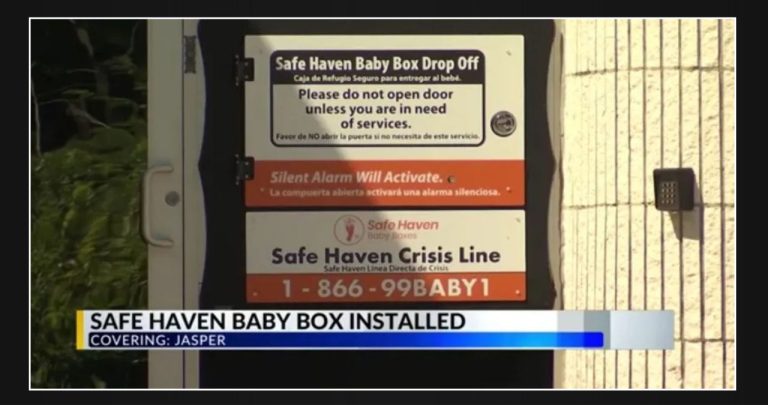Alabama is home to several county courthouses that have stood the test of time, exuding a delightful southern charm. These historic landmarks have withstood over a century of existence, serving as a testament to Alabama’s rich history. Let’s explore the oldest courthouses in Alabama, each boasting a remarkable century-long legacy.
Autauga County
The Autauga County Courthouse stands out as one of Alabama’s most distinctive courthouses. Built in 1906, it showcases a captivating “Romaesque Revival” architectural style. A rear annex was later added to the courthouse in 1962.
Bibb County
The stunning structure located in the heart of Centreville’s court square was finished in 1902. It was constructed using buff-colored brick, stone, and concrete. In the late 1990s, an addition was made to the building, which underwent renovation in 2000.
Bullock County
The Bullock County courthouse, situated in Union Springs, holds the distinction of being one of the oldest county courthouses in Alabama. Its construction dates back to 1871 and showcases the remarkable “Second Empire” architectural style.
Butler County
The Butler County Courthouse, situated in the heart of downtown Greenville’s East Commerce Street Historic District, stands amidst a collection of the town’s oldest commercial buildings. Its construction was finalized in 1903.
Calhoun County
The Calhoun County Courthouse, completed in 1900, stands as one of Alabama’s earliest examples of neoclassical architecture. In 1924, a north annex with a jail was added, followed by a southeastern annex in 1963. Unfortunately, in 1931, a devastating fire almost reduced the main structure to ashes. However, it was reconstructed, albeit with a modified tower.
Chambers County
The Chambers County Courthouse in LaFayette, built in 1899, holds great historical significance. It is a part of the Chambers County Courthouse Square Historic District, which was listed on the National Register of Historic Places in 1980. This district encompasses 45 contributing properties. Interestingly, the clock in the courthouse dome has a rich history as well. It was originally housed in the first permanent county courthouse, constructed in 1836.
Choctaw County
“The current courthouse in Butler, which was built in 1906 and occupied in 1907, is Choctaw County’s second courthouse,” states RuralSWAlabama.com. The courthouse underwent additions in 1956 and 1965. Recognized for its historical significance, it was added to the Alabama Register of Landmarks & Heritage in 1997. As part of Choctaw’s 150th birthday observances, a Military Memorial Walkway was dedicated in 1997.”
Clay County
“The Clay County Courthouse, located in Ashland, Alabama, is a historic courthouse building with a rich history. Constructed in 1906, this Classical Revival-style structure has been serving as the county courthouse for over a century. One of its most distinctive features is the grand dome, adorned with clocks on all four sides, and a cupola topped with a statue symbolizing justice. The significance of this courthouse is further recognized by its inclusion in the National Register of Historic Places on November 21, 1976.”
Cleburne County
The Cleburne County Courthouse in Heflin, Alabama is a stunning example of Classical Revival architecture. Constructed in 1907, it replaced the previous courthouse in Edwardsville when the county seat was relocated to Heflin in 1905. The courthouse underwent expansion in 1938, with the wings being expanded thanks to funding from the Federal Emergency Administration of Public Works. Recognized for its historical significance, the Cleburne County Courthouse was added to the National Register of Historic Places in 1976.
Coffee County
The stunning brick structure, situated in Elba, Alabama, was constructed in 1903. (Coffee County also boasts a second courthouse in Enterprise that was built in 1998). It earned its place on the National Register of Historic Places on May 8, 1973. Despite the numerous floods that have struck the town of Elba, the courthouse has stood strong each time and continues to serve its purpose to this day.
Colbert County
The Colbert County courthouse, located in downtown Tuscumbia, holds a special place as the centerpiece of the area. Initially constructed in 1881, it faced a significant setback when a devastating fire struck in 1908. However, the community rallied together and successfully restored the courthouse to its former glory. Over time, wings were added to the building, further enhancing its grandeur. Additionally, a clock tower was erected following the fire, serving as a symbol of resilience and endurance.
Covington County
The Covington County courthouse and jail, located in the county seat of Andalusia, was constructed in 1916. The architects designed the building in a Beaux-Arts style, using combed granite as the primary material. Over time, two wings were added to the rear of the building, which were later enclosed in the middle. Inside, the courthouse boasts white marble floors and grey marble walls adorned with gold leaf accents. One of its notable features is an exquisite Y-shaped staircase located at the rear of the atrium.
Fayette County
In 1883, Fayette County’s courthouse was situated approximately one mile away from the present downtown Fayette location. That same year, the Georgia Pacific Railway extended its line between Columbus, Mississippi, and Birmingham through Fayette County. As merchants started to settle along the railway line, a new courthouse was built in 1892 in the growing town near the station. Unfortunately, a devastating fire on March 24, 1911, destroyed most of the central business district, including the courthouse. In the aftermath, the town council implemented building codes that mandated the use of brick, stone, or concrete for all downtown structures. Consequently, the courthouse and several surrounding buildings in the town square were reconstructed and completed in 1911.
Hale County
According to the Encyclopedia of Alabama, Greensboro holds the distinction of being the inaugural county seat of Hale County, a title it still retains to this day. The original Hale County courthouse was established in 1867 within the confines of the former Salem Baptist Church. However, this structure was eventually demolished in 1907 and replaced with the current building in 1908. Tragically, a devastating fire in 1935 resulted in the destruction of the upper floors and clock tower. Nevertheless, these sections were promptly reconstructed later that same year.
Jackson County
The Jackson County courthouse sits in the heart of downtown Scottsboro, within the public square historic district. Constructed in 1912, this magnificent building showcases the classical revival style in its design. In recognition of its historical significance, the courthouse, along with the neighboring historic structures, was officially included in the Alabama Register of Landmarks and Heritage in 1981. Subsequently, it was also added to the prestigious National Register of Historic Places in 1982.
Lee County
“The Lee County Courthouse, located in Opelika, Alabama, is a historic two-story brick county courthouse. Constructed in 1896, it holds significant importance and was officially recognized as a part of the National Register of Historic Places in 1973. The courthouse was skillfully designed by Atlanta architect Andrew J. Bryan and Company, with construction led by Andrews & Stevens. Its architectural style is Neoclassical, showcasing timeless elegance. The total cost of both the courthouse and a separate jail building came to $35,000. Upon completion, the old courthouse, a two-story brick structure, was demolished to make way for the new and improved building.”
Limestone County
The Limestone County courthouse, situated in Athens, showcases a captivating blend of Neoclassical design with Palladian influences. Despite facing significant destruction during the civil war in the Battle of Sulphur Creek Trestle, the courthouse managed to survive. The Athens Courthouse Square Commercial Historic District, where it is located, also experienced multiple fires in the late 1800s. Nevertheless, the early 1900s brought about a period of revitalization, leading to the construction of the present courthouse in 1919.
Lowndes County
“The historic courthouse building in Hayneville, Alabama, known as the Lowndes County Courthouse, has been serving as the county courthouse since 1856. This Greek Revival-style structure is a testament to Alabama’s history, as it is one of only four antebellum courthouses still in use in the state. Its significance is further recognized by its inclusion in the National Register of Historic Places on June 24, 1971,” as stated by wikipedia.com.
Macon County
This historic building, situated in downtown Tuskegee, Alabama, serves as the county seat of Macon County. Designed by J.W. Golucke and completed in 1906, it showcases the Romanesque Revival architecture style. Notably, the tower’s corners feature intricately crafted gargoyles, giving it a distinct resemblance to London’s architectural marvels. Recognizing its significance, the building was added to the National Register of Historic Places on November 17, 1978.
Perry County
The Perry County Courthouse, situated in the county seat of Marion, holds historical significance. Constructed in 1855, the courthouse exemplifies the Greek Revival style and underwent expansion in 1954. Its architectural design is credited to Benjamin F. Parsons, a renowned New England architect who also created Pitts’ Folly in Uniontown. Notably, the courthouse is a contributing property to the Marion Courthouse Square Historic District, which received recognition on the National Register of Historic Places in 1996.
Pickens County
Built in 1878, the third courthouse was constructed for Pickens County following the destruction of previous buildings. Even though it was abandoned in the 1990s in favor of a more modern and spacious structure, the courthouse still remains in the town square. This historical building is accompanied by a chilling legend, which involves a ghostly face that is believed to be etched into one of the glass panes of the top window. According to the story, the face belongs to Henry Wells, who was accused of setting fire to the previous courthouse and sought refuge from an angry mob waiting to lynch him. To learn more about this intriguing legend, you can read my article: “13 Alabama Ghosts and Jeffrey: The Haunted Historic Places That Inspired The Book!”
St. Clair County
The St. Clair County Courthouse in Ashville, as mentioned in the Encyclopedia of Alabama, holds the distinction of being one of the oldest operating courthouses in the state. It is one of two courthouses in St. Clair County, with Ashville serving the northern part and Pell City serving the southern part. Notably, the original building is still in use and stands out with its 16 windows, portico and column entrance, and a prominent clock.
Shelby County
This stunning and sophisticated structure can be found in Columbiana, where it was constructed in 1905. Its architectural style is known as “Renaissance Revival.” The building replaced a brick courthouse, which now serves as the Shelby County Museum and Archives. Shelby County, once predominantly rural farmland, has now blossomed into one of the state’s most rapidly growing and prosperous counties.
Sumter County
The Sumter County Courthouse, designed in the Beaux-Arts style, has been serving as the county courthouse since its completion in 1902. This two-story structure is constructed with red brick, featuring terracotta architectural elements, and rests on a stone clad foundation. The courthouse is adorned with a dome and cupola, and its design was brought to life by Chapman and Frederick Ausfeld. Situated in the heart of a spacious town square, the courthouse is enclosed by an iron fence. Additionally, the square is also home to a brick bored well pavilion, built in 1924, and an 1830s brick probate office.
Talladega County
“The Talladega County Courthouse, situated in the county seat of Talladega, holds the distinction of being the oldest courthouse in continuous use in Alabama. Constructed in 1836, it underwent expansions in 1882 and 1902. Additionally, the courthouse was partially reconstructed following a fire incident in 1926,” as reported by the Encyclopedia of Alabama.
Wilcox County
“The Wilcox County Courthouse Historic District, located in Camden, Alabama, is an historic district that follows an irregular pattern along Broad Street, with its focal point being the Wilcox County Courthouse. Constructed in 1857, the courthouse showcases the elegant Greek Revival architectural style and continues to serve its purpose to this day.”
Read More:



